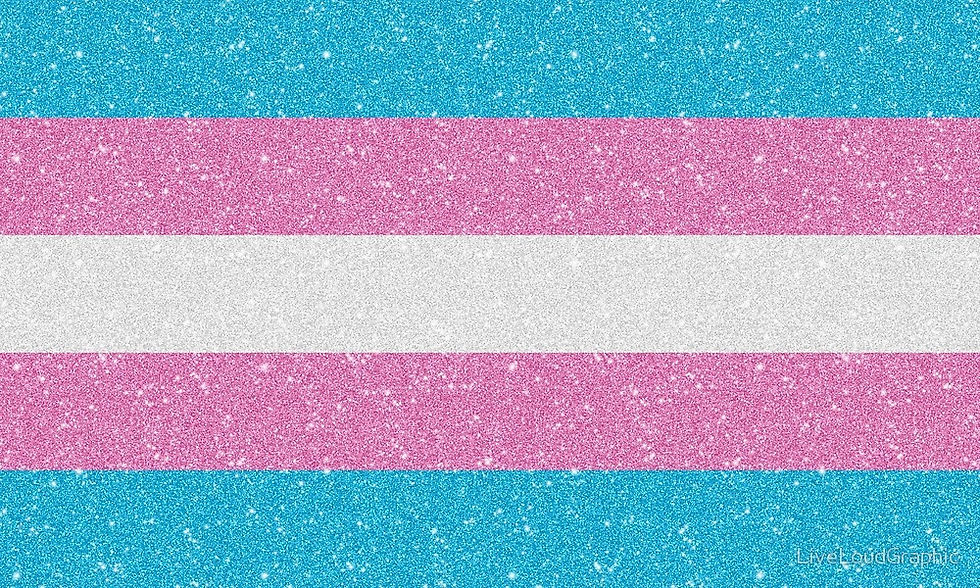Self, Representation & Homeliness
- Dominic Birch
- Mar 15, 2019
- 3 min read
Home, homeliness and unhomeliness are familiar concepts for trans people and trans discourse. Feelings of dysphoria are often experienced or glossed as being ill at ease with or alienated from our bodies. There is a tendency, however, to present the problems of alienation as having an easy answer: the modification of the body through surgery or hormone replacement therapy. If only, the narrative goes, we passed, had tits or a dick then we’d be able to make a home out of bodies that many of us hate. And certainly, for many, this is an answer. But for others that kind of treatment isn’t an option: binary trans people face long waiting lists to receive HRT, might feel unable to come out to their friends and family, or simply choose not to pursue gender reassignment surgery for a host of different reasons. For those, like myself, whose identities are less binaristic the choice is less simple. Sex reassignment surgery (‘cutting off my dick’ to quote the ever-giving Germaine Greer) would make me happy; popping E and growing breasts would not.
For many trans people feeling at home with their bodies is not a process that begins or ends with transition. Trans people have to negotiate how to make their bodies feel homely every single day. This is as much about how our bodies are read as it is about how we feel about them. Gender, we now realise, is a spectrum. The crucial problem with this insight is that it often fails to take our understanding to where we need it to be. Gender is a spectrum and many of us have a place in that spectrum where we would feel comfortable. Whatever our internal understanding of our identities, we will be read according to the concepts that the people around us are aware of and are using. These concepts might not only be gender-oriented. For instance, I am aware that my gender is read as follows depending on the situation and the observer: trans woman, non-binary masc, non-binary femme, drag queen, twinky gay boy, generic man. A few of those I’m comfortable with, and a few I’m not. Knowing that I’m being read in ways I’m not comfortable with makes my uneasiness with my body worse. This is why ‘passing’ matters to so many trans people. Passing means aligning your place on the gender spectrum with the place that observers put you, and it can be a deeply validating experience.
Whether you want to pass or not, leaving the house as a trans person is an unusually calculated process. How do I want to look today, and to whom? Make-up or no make-up? A dress, a skirt, a jumpsuit, trousers? Is it okay for me to look like some sort of gender car crash whilst teaching my undergraduates or meeting my supervisor? Behind each of these questions lies the possibility of crushing dysphoria, or euphoria validation. Trans people are acutely aware of being viewed by other people, and are therefore forced to consider aspects of their appearance in a unique way. For some trans people—trans women of colour particularly—how you are read can literally be a matter of life and death.

All this is to say that the idea that feeling at home with one’s body, for trans people, is much more than a matter of surgery or hormones. Turning your body into something useful—something safe even—often relies on things that society declares frivolous or ornamental: clothes, make up and wigs, for instance. These things mean something unique to each trans person; but they are generic markers to society at large. The dichotomy between individual and societal meaning has led to some misunderstandings about trans people. Trans women, for example, are criticised by second wave feminists for engaging in stereotypical exercises of femininity, and relying on the make-up and clothing such feminists have sought to free themselves from. Queer culture, more broadly, is constantly attacked as frothy—too frivolous, too aesthetic, too capitalist. We need to fight this discourse on multiple levels. The ornamentation of bodies is as important for many trans people as the physical changes trans people may decide to go through. Wanting to wear a dress, or make-up, is not necessarily a capitalist act: it’s often a gender creative one, and a way for trans people to feel comfortable in themselves. Trans people of all stripes don’t (just) need surgery and hormones to feel at home in ourselves: we need people to accept the bodies we wear, and how we wear them. Pay attention to the things we do to (and with) our bodies—it might tell you more than you think.

Comments